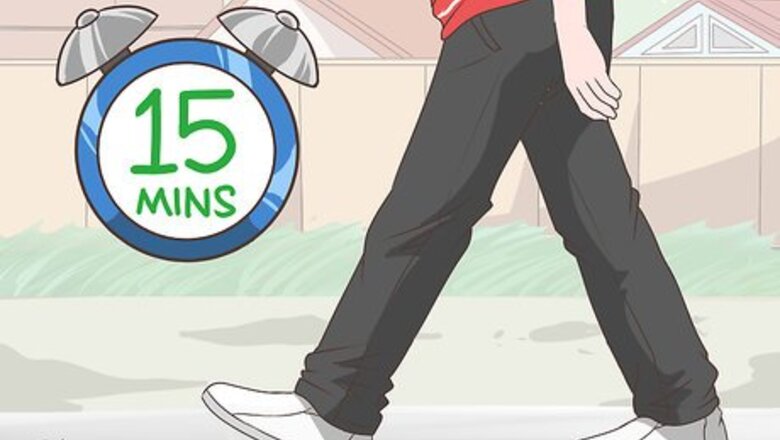
views
X
Trustworthy Source
Cleveland Clinic
Educational website from one of the world's leading hospitals
Go to source
Luckily, you can treat this discomfort using various home remedies, medication, and by eating and drinking properly.
Passing Gas After Your Surgery
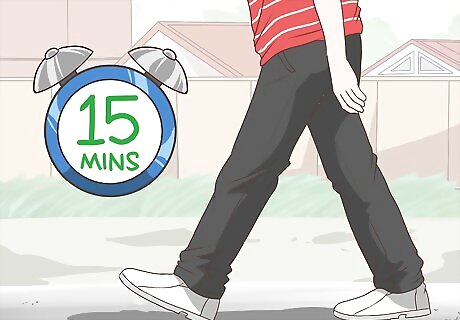
Go for a short, gentle walk to encourage your bowels to move. Walk for 15 minutes in the area around your home, but only if you feel comfortable with this level of activity. Walking will encourage the muscles in your bowels to work, which helps relieve constipation and bloating and encourage flatulation. Avoid doing any physical activity more strenuous than walking for at least the first few days after your surgery.
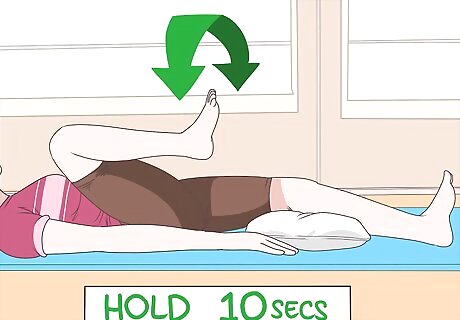
Do leg-raising exercises that help you pass gas. Lie on your back and place a pillow under your knees. Then, slowly raise your right leg towards your stomach with your knee bent and hold it there for 10 seconds. Lower your leg after 10 seconds and repeat this exercise with your left leg. These leg raises will contract and expand the muscles in your abdomen, helping to move gas through your digestive system. Repeat this exercise 2-3 times a day until your discomfort is gone.
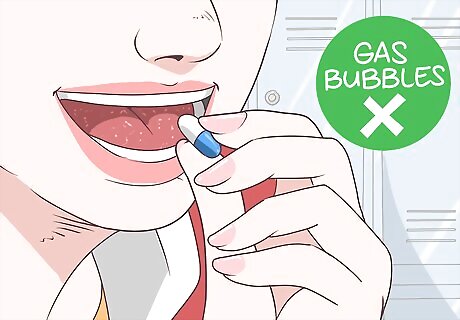
Take medication to help you pass gas. Use medications that are specifically designed to eliminate gas bubbles in the body or make it easier for you to pass gas. Be sure to clear any medications with your doctor before taking them on your own. Some examples of medications that help with the passage of gas include Simethicone and Colace. You can buy these medications at most pharmacies or drug stores. Nita Ahuja Nita Ahuja, Colon Cancer Survivor & Patient Advocate After laparoscopic surgery, trapped gas can cause bloating. Take frequent short walks to encourage gas to pass. Apply a heating pad, avoiding direct skin contact, for soothing warmth. Simethicone tablets break up gas bubbles, while mint or ginger tea relax digestion. If gas persists beyond a few days or you vomit, contact your surgical team.
Relieving Discomfort
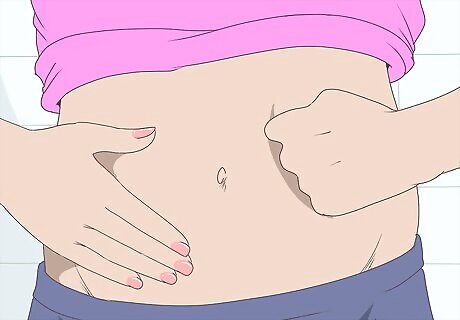
Massage or rub your stomach to help get rid of gas discomfort. Make a fist with your left hand and push your knuckles into the right side of your stomach using gentle pressure. Then, roll your hand up toward your chest, across your abdomen, and then down the left side of your stomach. This type of massage helps relax your abdominal muscles and stimulate activity in your bowels. Be sure not to use too much pressure when massaging your stomach, as this may cause even more discomfort than you started out with.
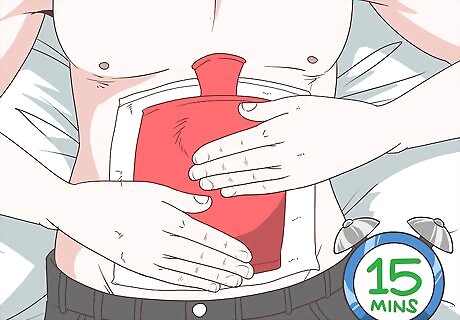
Apply a heat pack to your abdomen for 15 minutes to ease gas pain. Wrap the heat pack in a towel so that you don’t apply it directly to your skin. Placing a heat pack against bare skin can cause numbness and even minor injury. Note that while applying a heat pack will help relieve your gas pain, it may also increase any swelling you’re experiencing after your surgery. You can apply a heat pack as often as necessary to stimulate your abdominal muscles. However, avoid applying heat for more than 20 minutes at a time and give yourself a break of at least 20 minutes between applications to allow your body to cool back down.
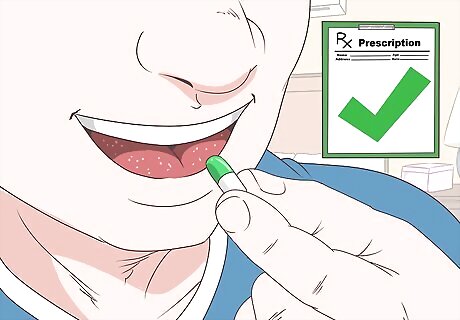
Take pain medication as prescribed by your doctor. Your healthcare provider may want you to take a particular prescription pain reliever, especially if you have post-surgery pain in your shoulders. Avoid taking any pain medications that your doctor doesn’t prescribe, as some pain relievers may cause additional constipation. Some pain medications also cause nausea. If you experience any nausea, tell your doctor at once and see if you can be switched over to a different medication. To avoid potential constipation caused by medication, make sure you drink plenty of fluids and eat fiber-rich fruits and vegetables. Keep in mind that some pain medications can also worsen gas and increase the time it takes for your bowel habits to get back to normal.
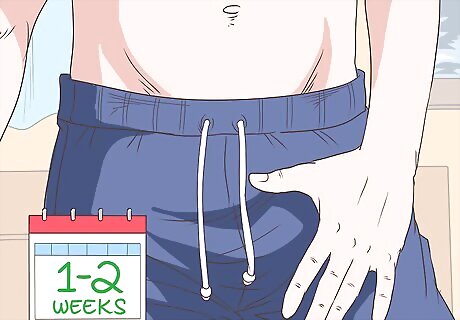
Wear loose, comfortable clothing that won’t push on your abdomen. Stick to clothes that don’t have an elastic waistband for the first 1-2 weeks after surgery or until you no longer experience constipation and gas discomfort. If possible, wear clothes that are slightly larger than what you normally wear so that they don’t feel tight around your abdomen. Clothes like pullover dresses and pajamas are ideal for the first couple of weeks after surgery.
Eating and Drinking After Surgery

Sip some hot peppermint tea if your doctor says it’s ok to drink. Hot peppermint tea has been known to help increase gastrointestinal activity and relieve abdominal pain caused by gas. However, be sure to consult with your doctor to make sure it’s ok for you to drink it. For even more gastrointestinal motility, drink a tea with natural laxative properties, like Smooth Move tea.
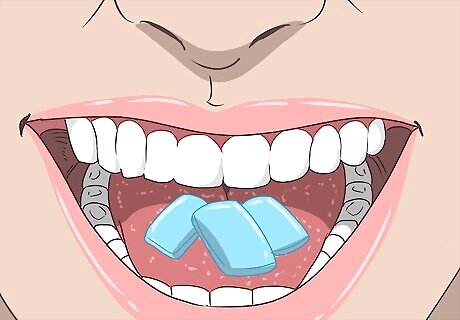
Try chewing gum after your surgery to speed up your recovery. Like drinking hot tea, there’s also some research evidence that chewing gum after surgery helps decrease the amount of constipation you experience after laparoscopic surgery. Chew gum for 15 minutes every 2 hours after your surgery to get this unexpected health benefit. It doesn’t matter what flavor of gum you chew; it’s the chewing motion that matters most. Make sure that you keep your mouth closed and avoid talking while you are chewing gum. Otherwise, you may end up swallowing more air and making gas worse.
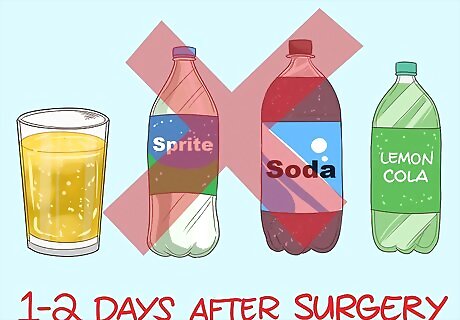
Avoid drinking carbonated drinks for 1-2 days after your surgery. Drinking carbonated drinks can make the pain from the carbon dioxide used during your laparoscopy even worse. Avoiding these gaseous beverages can also help reduce any nausea you experience after your surgery. While you should definitely avoid carbonated drinks for at least the first 2 days after your surgery, ask your doctor if you need to refrain from drinking them for a longer period based on your condition.

Refrain from drinking with a straw until your gas pains are gone. Drinking liquids through a straw may cause you to inadvertently swallow air when you drink, leading to painful air bubbles in your gut. Only drink out of open-top containers after your surgery until you’re no longer experiencing discomfort in your abdomen.
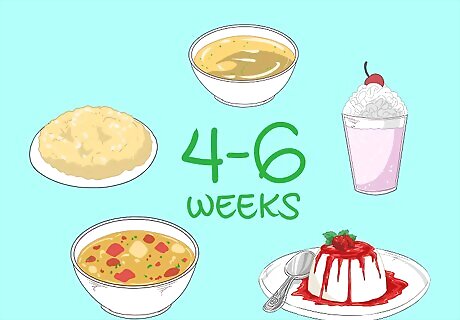
Stay on a diet of liquids and soft foods for the first week after surgery. These foods will be easier for your body to digest and are also easier to swallow. After this first week, gradually incorporate more and more soft foods into your diet over the course of the next 4-6 weeks. Ideal foods to eat and drink during this first week include broths, soups, milkshakes, puddings, and mashed potatoes. Avoid eating foods that are hard to digest, such as crusty bread, bagels, tough meats, raw vegetables, and nuts.
















Comments
0 comment